This post contains affiliate links.
Before daydreaming about fresh morning eggs, there are a few things to consider. Raising chickens is a rewarding experience, full of learning and joy; however, it is not always a walk in the park, as I can state first-hand. This guide addresses the essentials of what is needed from setting up the coop and the space requirements to the social needs of your feathered friends.
What You Need to Know Before Getting Your First Backyard Chicken
If you are considering getting backyard chickens, there are critical factors to consider to ensure a positive journey. Before bringing home your first chicken companion, know that chickens require commitment and proper care.
I was so excited to come home with my first 5 pullets and expected to find eggs in the coop the following day. To my dismay, I learned that my prize pet chickens were still teenagers and not even close to being mature enough to lay eggs.
After placing them in the newly fabricated coop, I learned that they had to stay in the coop for at least 30 days so that they would “imprint” to the coop as their home and learn to return to it every night to roost.
During that time, I had to feed, water, clean, and socialize with the chickens without the benefit of fresh eggs. I quickly learned that there is more to this process than the initial novelty of fresh eggs.
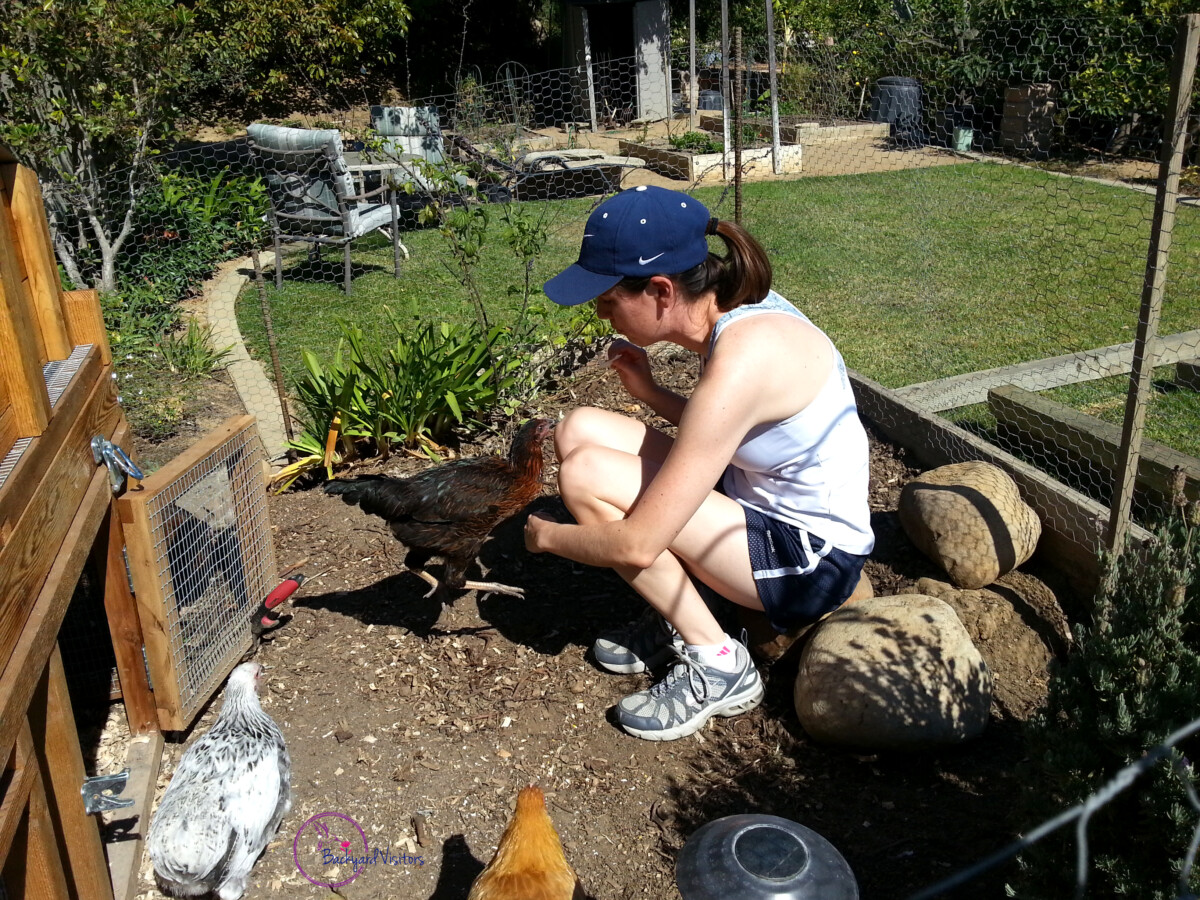
You are signing up for the full experience of chicken-keeping and creating a long-term bond with these birds. As a first-time owner, you are bound to encounter new scenarios from health issues to behavior curiosities, therefore it is crucial to understand the needs of backyard chickens, from their living space to their dietary requirements and it is essential to do your homework so that you can anticipate and address these concerns.
Knowing local regulations is primary as you enter a community of fellow poultry enthusiasts and neighbors. You are responsible for your birds and are an ambassador of the backyard chicken community. By staying informed, you are empowering yourself to raise a happy, healthy flock.
My local community, like most communities, encourages backyard chicken keeping, but not roosters!
I also learned, after the fact, that my local HOA did have rules against keeping chickens in my backyard.
Luckily my neighbors enjoyed the gentle cooing sounds of my chickens and some neighborhood children would even come visit with my chickens with their parents.
Always remember to prepare for varied weather conditions, predators, and the need to maintain a clean and safe environment for your chickens. With the right knowledge, and a touch of patience, you are sure to find that the joys of keeping backyard chickens outweigh the challenges. Embrace this exciting step, you are on the verge of a rewarding adventure in poultry parenthood!
Read my other related articles:
- The Beginner’s Guide to Raising Backyard Chickens
- 7 Reasons Why Raising Chickens in Your Backyard is a Great Idea
- How Much Space Do You Need to Raise Chickens
- The Top 5 Chicken Breeds for Your Backyard
- Understanding the Basics of Chicken Health and Welfare
- The Environmental Benefits of Raising Backyard Chickens
Understand Local Laws and Regulations Before You Get Chickens
Embarking on a journey to raise backyard chickens is incredibly rewarding; however, it is crucial to understand the local laws and regulations before you dive in. Every municipality has its specific set of rules governing the keeping of chickens. Some permit a whole flock, while others limit the number or prohibit roosters altogether due to noise considerations.
Requirements regarding coop structures, property line setbacks, and permits vary significantly from one place to another. Before you get chickens, take the time to research and comply with these local ordinances to ensure your chicken-keeping experience is both lawful and enjoyable.
It is common for enthusiastic future chicken owners to overlook this step in their eagerness to start their flock, only to discover their oversight when neighbors or city officials raise concerns.
Whether you are dreaming of fresh eggs each morning or the simple pleasure of a feathery backyard brood, remember to acquaint yourself with your local regulations before bringing home your feathered friends. This preemptive step will not only protect you from potential legal headaches but also set the stage for a harmonious relationship with your community and your chickens.
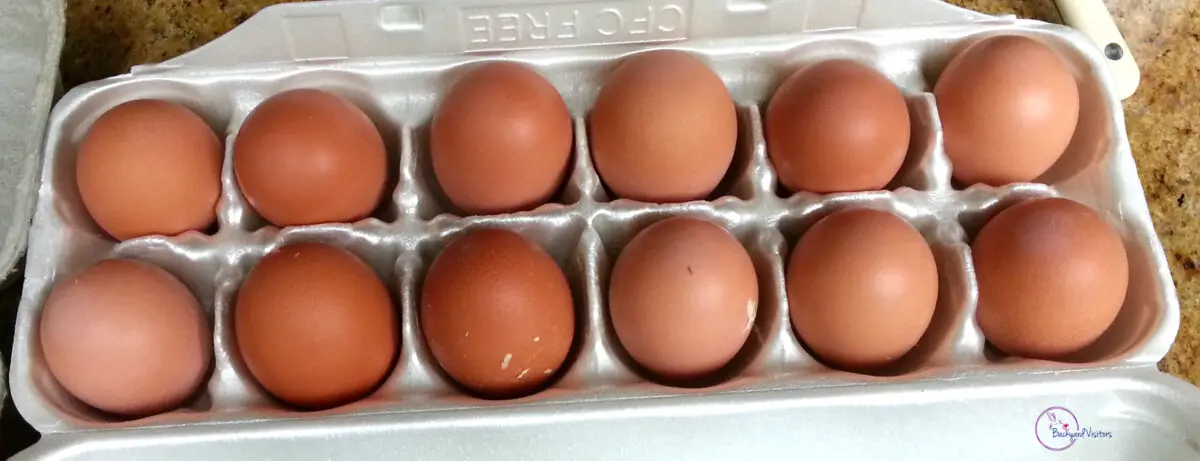
Choosing the Right Chicken Breeds for Your Backyard Flock
Selecting the right chicken breeds for your backyard flock is about understanding which breeds fit your goals and lifestyle. Whether you are looking for layers that will provide a consistent supply of eggs, or birds that have a calm temperament and are good for a family setting, it is important to do your preliminary research.
Some chickens are exceptionally hardy and suitable for colder climates, while others are more productive in warmer areas. Climate considerations are pivotal in making the right choice of breeds. Your backyard flock’s success and your satisfaction in raising chickens hinge on this decision.
When raising chickens, ensure they will thrive in your care. For instance, Sussex or Plymouth Rock chickens are known for their docile nature, making them excellent starter chickens for individuals new to raising poultry.
The beauty of raising a variety of chicken breeds is the diversity they bring to your backyard, from the speckled feathers of a Wyandotte to the striking silhouette of a Leghorn. Every chicken has its own personality and needs, so consider space, temperament, noise level, and your raising experience.
My flock of chickens include Buff Orpington, Sussex, Rhode Island Red, Cuckoo Maran and Australorp. They are good layers therefore I get a regular supply of eggs except when they are molting or during the winter when the daylight hours are less at which time their egg production decreases.
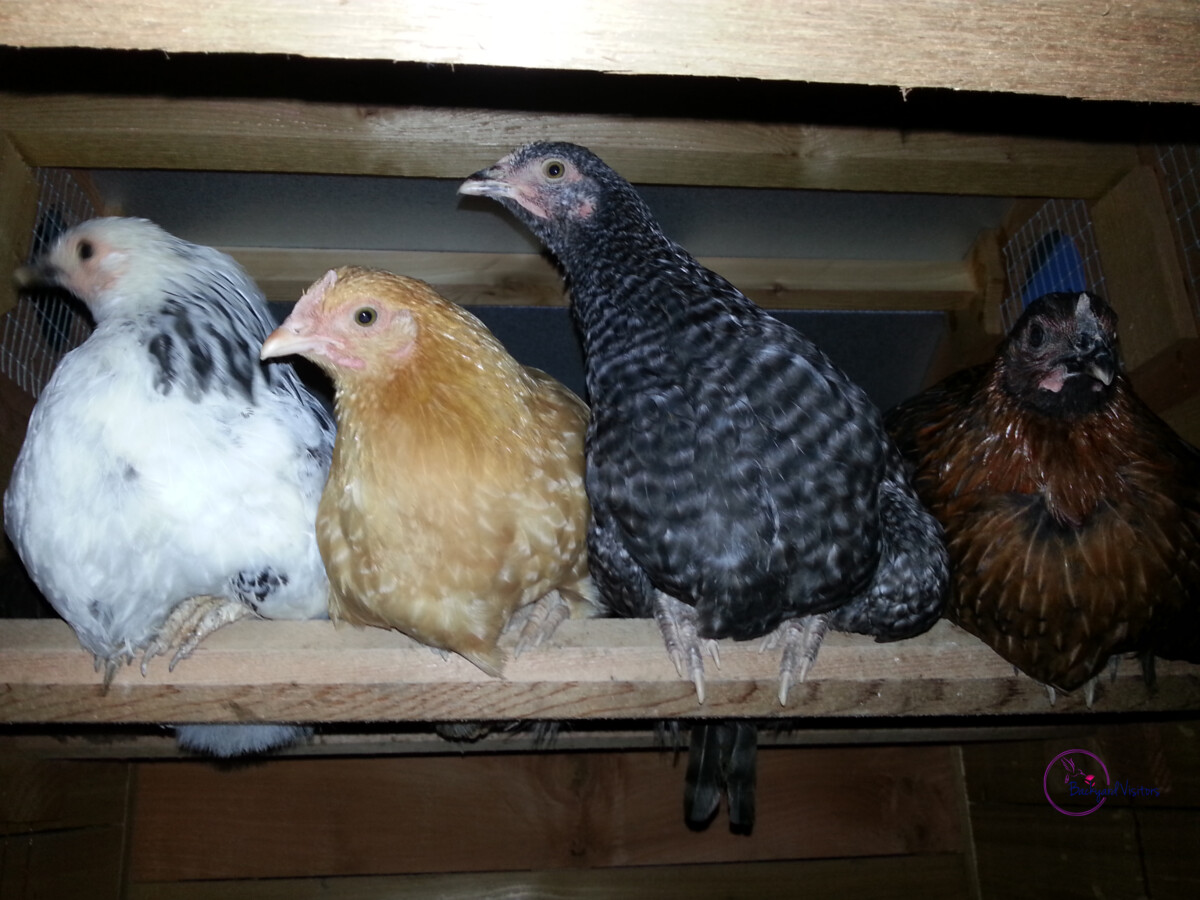
From left to right:
Stealer – Sussex; Carmel – Buff Orpington; Ducky – Cuckoo Maran;
Ameraucana – Molasses.
Remember, while it is tempting to focus on just the egg laying aspect, balancing that with how a chicken integrates into your flock is essential. Raising chickens is a rewarding venture, but having the right breeds makes it all the more enjoyable. With careful consideration and a bit of chicken know-how, you will have a flourishing flock in no time!
How to Feed Your Chickens: Nutritional Tips for a Healthy Flock
Embarking on the journey of raising chickens is as rewarding as it is entertaining. A crucial aspect of nurturing your new feathered friends is understanding how to feed your chickens properly to ensure they flourish. A balanced diet is vital, and nutritional tips for a healthy flock are not just beneficial, they are necessary.
The foundation of chicken nutrition revolves around a good quality commercial feed, which provides a solid staple of the required nutrients. Remember, though, variety is the spice of life!
Supplementing their diet with garden scraps, protein-packed mealworms, or a handful of grains keeps your avian friends both happy and healthy.

All I have to do is shake the container, and they come running!
Note: My chickens love these mealworm treats! If I want to call my chickens back to the coop I will shake the container of mealworms. They will stop whatever they are doing and come running home.
Ample fresh water should accompany their feed, as hydration plays an unmistakable role in their overall health. As you delve deeper into how to feed your chickens, take note of how much your flock consumes to prevent overfeeding, which can lead to health issues.
My chicken coop features a food and water distribution system that cannot be overturned. This prevents the possibility of creating a mess or excessive waste. It keeps the coop muck cleaner and since my chickens can eat on demand, they did not overeat.

Seasonal considerations also affect their dietary needs, with more energy-rich feed often necessary during cold months. Adherence to these nutritional tips gives your chickens sustenance, and fosters a lively and robust flock that will be the envy of the neighborhood!
The Fundamentals of Raising Chickens: A Beginner’s Guide
Understanding the fundamentals of raising chickens is key to ensuring a positive experience. At the heart of your success is the well-being and management of your chickens, your dedication to their care, and the joy they bring to your life.
As a beginner, it is crucial to familiarize yourself with the basics on the path to chicken mastery. This guide is to help you grasp the essential aspects, from shelter construction to daily community interactions that become the rhythm of life with your chickens.
The commitment to raising happy, healthy chickens is just as important as finding and setting up a coop. Delve into the intricacies of their behavior, appreciate the nuances of their needs, and anticipate the fulfilling journey of raising your flock. Learning the ropes on the practical side helps ensure your chickens’ safety, health, and happiness, three pillars that are non-negotiable for any aspiring chicken owner.
As you embark on this adventure, remember, the experience is as rewarding for you as it is for your chickens. Embrace the responsibilities that come with poultry caretaking and enjoy every step, from picking the perfect breed to the first egg collection, on the remarkable road of raising chickens with love and care.
Do Your Chickens Lay Eggs Consistently? What to Expect from Your Hens
A common question for new and eager backyard chicken keepers is asking, “Will my hens lay eggs with clockwork regularity?” Egg production varies, however understanding what to expect from your hens is pivotal.
Hens lay eggs most reliably in their first few years, with peak consistency often observed after they have matured from pullets to full-fledged layers. Your chickens’ ability to lay eggs consistently is influenced by several factors such as breed, nutrition, and day length.
Chicken’s egg laying potential revolves around their daily exposure to light. Without supplemental lighting, the laying potential will fluctuate with the seasons.
Read my articles:
Do Chickens Lay Eggs Year Round? Understanding Seasonal Laying Patterns
Eggsplore the World of Chickens Laying Eggs
The right chicken breeds make a significant difference in your egg basket. Some hens are prolific layers, gifting you with eggs nearly every day, while others, often the heavier breeds, pace themselves more leisurely.
Here is a list of the top 10 laying hens in the order of production and an estimate of how many eggs each of them will lay in a month:
- Hy-Line Brown – Approximately 90 eggs/month
- Lohmann Brown – Approximately 85 eggs/month
- Golden Comet – Approximately 80 eggs/month
- ISA Brown – Approximately 78 eggs/month
- Plymouth Rock – Approximately 75 eggs/month
- Rhode Island Red – Approximately 70 eggs/month
- Sussex – Approximately 65 eggs/month
- Leghorn – Approximately 65 eggs/month
- Ameraucana – Approximately 60 eggs/month
- Buff Orpington – Approximately 55 eggs/month
When feeding your chickens, balanced nutritional input is vital for regular egg production. Flocks with access to a diverse diet rich in proteins and calcium will reward you with a plentiful supply of eggs.
Even the best hen layers can experience interruptions in laying eggs, therefore to not be alarmed if your hens decide to take the day off. Factors such as molting, stress, or extreme weather cause your diligently laying hens to hit a temporary pause on eggs. It is all part of the natural ebb and flow you will learn to expect and accommodate as a backyard chicken enthusiast.
Pay attention to these signs, and with time, you will find that your hens, endearing and productive as they are, will provide you with eggs more consistently than not.
Considerations for Keeping Chickens: Space, Shelter, and Protection
When it comes to keeping chickens, several key considerations must be factored into your planning to ensure a happy, healthy flock. One of the first things to think about is space. Your backyard chickens need enough room to roam, peck, and forage, as a garden contributes significantly to their well-being.
Adequate shelter is another essential. From protection against inclement weather to a safe haven from predators, your hens’ housing makes all the difference. A sturdy coop shields your birds from their numerous adversaries and the elements.
Furthermore, protection remains a cornerstone of poultry husbandry. Whether it is fencing to keep them safely corralled or to shield them from the local wildlife that may see your backyard chickens as a snack; vigilance is vital.
The freedom you allow your chickens, from their spacious pens to the liberty of exploring your garden, will dramatically impact their quality of life. In my experience, tending to these aspects of chicken care greatly enhances the satisfaction that me and my chickens derive from each other.
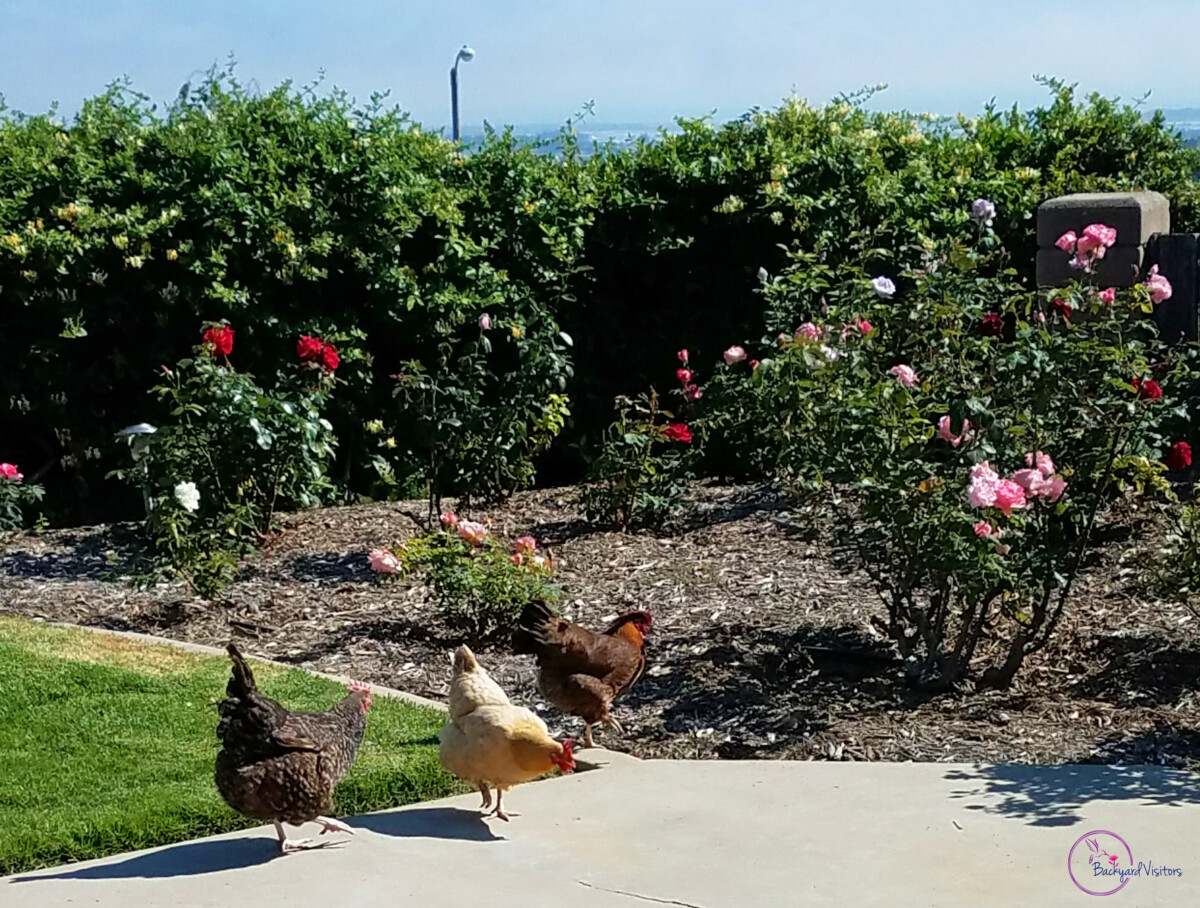
Finally, always consider how your chicken-keeping practices affect those around you, from your next-door neighbor to the wider community, ensuring peace and goodwill.
Reflecting on my own journey, I have learned that the integration of my backyard chickens into my daily life, from their morning clucks to the joy of collecting eggs from my own chickens has been nothing short of rewarding. From sunrise to sunset, a well-considered chicken habitat creates a harmonious, vibrant backyard ecosystem.
Planning Your Chicken Coop: How Much Space Do Your Chickens Need?
When you are setting out on your journey of raising chickens in your backyard, an essential aspect to consider is planning your chicken coop. It is the bedrock of your chickens’ health and happiness.
If you are wondering how much space your chickens need, remember that each bird requires approximately 5 square feet inside the coop and roughly 8-10 square feet in an outdoor run to be adequate, however more is better.
Ensure they have room to strut and this will keep the harmony in the pecking order and give your chickens every opportunity to thrive.
Your backyard flock’s well-being hinges on the space they have to perch, nest, and scratch. Too little room leads to stress, pecking problems, and a downturn in egg production. Therefore, in your backyard sanctuary, observe your chickens to ensure they have the elbow room they require.

As you dive into planning your coop, do not cut corners on space. If anything, go a bit over to accommodate their needs. Keep in mind that while your backyard may have its limits, your ingenuity in creating a spacious haven for your chickens.
Remember, your chickens’ home is their castle, so give them an abode they can rule with content feathers. It is quintessential for your chickens’ life quality and also as an investment in the bounty they bring to your backyard ecosystem.
Before You Get Chickens: The Importance of Learning About Chicken Care
Embarking on a journey to raise backyard chickens is an adventure like no other! Before you get chickens, it is absolutely vital to immerse yourself in learning chicken care to ensure you are well-equipped for the task at hand.
The importance of research cannot be overstated. You will quickly find out that there is a whole lot to know about these feathered friends. From understanding their dietary needs to managing their living space, there is plenty to learn and do. Chicken enthusiasts share that each breed has its quirks, so conscientiously choose the right chicken breeds for your flock.
Before diving beak-first into raising chickens, do your homework on chicken care essentials. The foundations you lay now will impact the health and happiness of your flock for years to come. I cannot stress enough how key it is to learn all you can to provide proper care which minimizes stress for both you and your chickens.
Get to know the local regulations to avoid any legal hiccups, attentively plan the layout of your coop, and study chicken behavioral patterns. You are bound to encounter surprises along the way, such as how consistently your chickens lay eggs, and each discovery is a chance to grow in your chicken-rearing expertise.
Check Your Commitment: Understanding the Lifespan of Laying Hens
When you decide to welcome laying hens into your life, it is crucial to check your commitment level to these feathered friends. Understanding the lifespan of your chickens is a cornerstone of responsible backyard poultry keeping.
Hens enjoy a productive lifespan that stretches up to 7 years, however, do not be surprised if some hardy hens reach well into their golden years, surpassing this age.
Listed below is the life expectancy of standard size laying chickens by name and in order of longest living:
- Rhode Island Red: 8-10 years
- Leghorn: 6-9 years
- Plymouth Rock: 6-8 years
- Sussex: 6-8 years
- Australorp: 6-7 years
- Orpington: 5-8 years
- Wyandotte: 6-12 years
- Araucana: 7-8 years
- Ancona: 7-8 years
- New Hampshire: 5-8 years
Remember that a hen’s egg-laying peak usually occurs in the first few years, gradually declining as the hens age.
It is admirable to check in with yourself and gauge if you are ready for the long haul. Hens, after all, will rely on you for their wellbeing throughout their lives. Keep in mind, your chickens need you, rain or shine, through cold snaps and scorching summer days.
Another check to make is your preparedness for their twilight years. When hens retire from laying, they will still need your care and companionship.
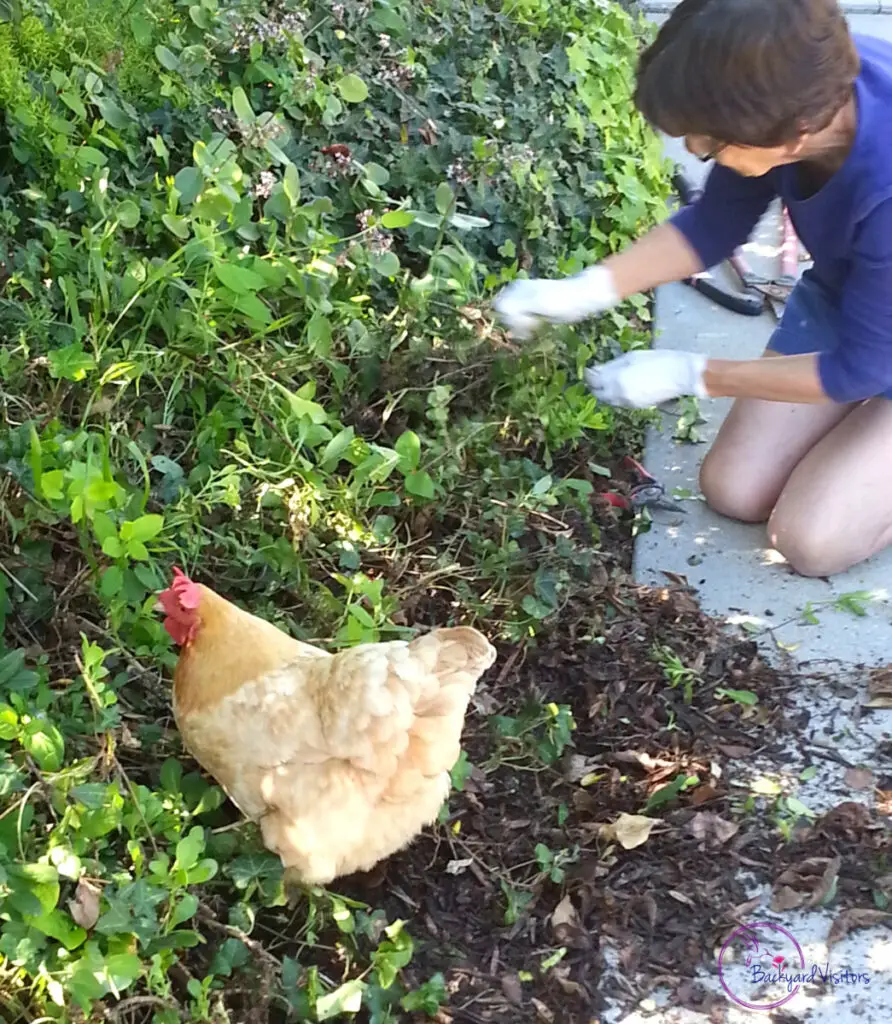
Examine and check on the big picture. Will your lifestyle allow the dedication hens require? By understanding what is involved in caring for your chickens over their lifespan, you will ensure a coop full of happy, healthy hens that are well worth the commitment.
The Reality of Backyard Chickens: Predators and How to Protect Your Flock
Delve into the reality of raising backyard chickens, and quickly find that predators are one of the biggest threats to your feathered friends. It is essential to understand how to protect your flock and ensure the safety of your chickens.
Predators come in all shapes and sizes; from sly foxes, cunning raccoons, to aerial threats such as hawks. To keep your chickens safe requires diligence and knowledge of the local wildlife that pose a risk.
Ensuring that your coop is a fortress is paramount. Reinforcing it with hardware cloth rather than chicken wire, which is easily breached, and securing all possible entry points will significantly decrease the chances of predators snatching your chickens.
Additionally, consider a sturdy lock for your chicken coop door, because raccoons, in particular, have dexterous paws that can open simple latches. Do not forget the importance of a secure run area where your chickens can safely roam during the day.
I made my 320 square-foot long and narrow chicken run with a full size tree on each end. This chicken run is structured up against the house on the side that gets morning sun and afternoon shade.
This design makes it difficult for hawks to “swoop” into the chicken run and attempt to snatch and grab one of my chickens even though several have contemplated doing it from a nearby tree branch and a couple have even sat on the fence but figured out that it was not feasible.
They soon realized that there is not enough room for them to swoop down, grab and regain enough momentum and elevation before they crash into a tree. There is just not enough room to get momentum to attempt a swoop and snatch.
My hens are not shy about alerting each other of the danger and by listening, I am now able to understand their warning cries. It is an unmistakable call easily heard inside the house or in the yard.
Beyond fortifying your coop and run; installing motion-activated lights or even electric fencing is a great deterrent for nighttime prowlers. Protecting your flock is not about keeping predators out, it is also about giving peace of mind to you as an owner and ensuring that your backyard chickens lead happy, healthy lives under your watchful eye.
When Keeping Chickens, Remember to Account for Molting and Egg Production
When you dive into the fulfilling endeavor of keeping chickens in your backyard, you are in for an adventure that requires a bit of knowledge to ensure a happy, productive flock.
The natural processes that your feathered friends go through, such as molting and fluctuations in egg production are two key aspects that novices initially do not consider.
Molting is when chickens shed their old feathers to make way for new ones. During this period, chickens will look a bit scruffy, and it is important to remember that this is a completely normal and healthy process. It is also crucially tied to egg production, which decreases, sometimes significantly, while your hens are molting.
Account for this seasonal change by not counting your chickens before they hatch, quite literally! Remember, a chicken’s diet during molting should be richer in protein to help them grow beautiful new plumage, which in turn, will have them back to laying eggs consistently. Understanding the ebb and flow of egg production is part and parcel of keeping chickens. Do not let the temporary decline alarm you; it is just part of the chicken’s natural cycle.
Join the Conversation: Share Your Experiences and Tips for New Chicken Keepers
When you are ready to dive into the rewarding world of backyard chickens, joining a community of seasoned chicken keepers is invaluable. Sharing your experiences and absorbing tips from others helps you navigate the journey with confidence.
During your coop set up, consider when to introduce new birds, or ponder when to change your feeding strategy, it is the shared wisdom from those who have been there that will guide your decisions.
If you are wrestling with when your hens will begin laying or when you should expect a drop in egg production due to molting, it is reassuring to have a network to share concerns. Do not hesitate to share your stories; your unique insights could be exactly what a new chicken keeper needs.
As you contribute your knowledge, remember that every tip you give strengthens the community. Your advice on when to check for predators or when to expand your coop could save someone else’s flock. When it comes to raising chickens, your experiences are golden.
Encourage others for their input. You never know when a simple conversation can spark an idea that enhances your own poultry paradise. Join the conversation, share your insights, and help enrich the lives of new chicken keepers and your feathery friends alike.
Check out my other posts on Backyard Chickens
Frequently Asked Questions
Q: What factors should I consider before bringing backyard chickens home?
A: Before introducing chickens to your backyard, familiarize yourself with local regulations. Then, consider space requirements, social needs, dietary necessities, and commitment levels. Prepare for weather conditions and predators. Plan to maintain a clean environment for the health and safety of your flock.
Q: Why is it important to learn local laws and regulations before starting a backyard chicken flock?
A: Learning local laws and regulations is essential to ensure your chicken-keeping is lawful and does not cause friction within your community. Each municipality has different rules on numbers, types of chickens allowed, coop specifications, and permits. Complying with these prevents legal issues and promotes neighborly harmony.
Q: How do I choose the right chicken breeds for my backyard flock?
A: Select breeds based on your climate, the temperament you prefer, noise level, and your experience with raising poultry. If you are aiming for egg production, choose known prolific layers. Research breeds to make sure they will integrate well into your flock and meet your expectations for behavior and care.
Q: How should I feed my backyard chickens?
A: Feeding your chickens involves offering a balanced diet with good quality commercial feed as the staple and supplementing with garden scraps, grains, and proteins such as mealworms. Monitor their intake to avoid overfeeding and adjust their diet based on seasonal energy needs.
Q: How much space do chickens need in their coop and outdoor area?
A: Aim to provide each chicken with 5 square feet inside the coop and about 8-10 square feet in the outdoor run. Sufficient space prevents stress and promotes well-being, leading to healthier birds and better egg production. Plan your coop size generously for future needs and flock dynamics.
Q: What should I know about the egg-laying consistency of hens?
A: Understand that hens have peak egg-laying periods typically in the first few years and this may gradually decline with age. Factors affecting egg production include breed, nutrition, stress, molting, and day length. Regular egg-laying patterns can be encouraged by a healthy diet and stable environment.
Q: How do I ensure the safety of my backyard chickens from predators?
A: Protect your chickens by reinforcing the coop with hardware cloth, securing all entry points, and using sturdy locks. Provide a secure run area and consider added deterrents such as motion-activated lights or electric fencing. Vigilance and a well-fortified habitat protects against predatory wildlife.
Happy Backyard Chicken Raising!
Backyard Visitors participates in affiliate programs which compensate us for referring traffic.

